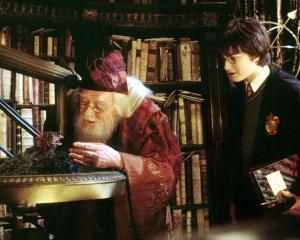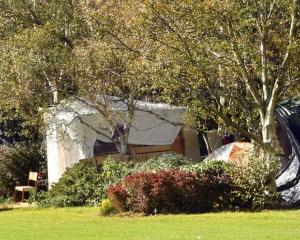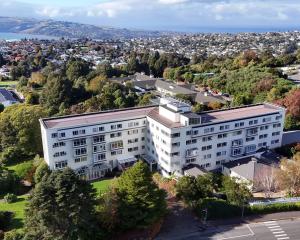
Mr Lyders was part of the final push to free Le Quesnoy during World War 1, and just days before the northern French town was liberated from the Germans, he was seriously injured.
His story has been researched and documented by his great-grandson, Otago Boys’ High School student Cameron Brown, as part of a school project.
And now it is about to be "immortalised" by being published as a permanent online exhibition at the New Zealand Liberation Museum-Te Arawhata, in Le Quesnoy.
The museum commemorates the liberation of the French town by New Zealand soldiers during WW1.

Cameron said his great-grandfather spoke very little about his time in the war with family, but the letters between him and his family during the conflict said a lot about what life in the war zone was like, and how it affected him and his family.
"He was very, very close to Le Quesnoy when he was injured. It happened on September 18, 1918 - right near the end of the war. He was part of that final push to free the town. The Germans surrendered not long after.
"He got shot just above his ear and it took off a massive bit of his skull.
"You know the [Otago Boys’ High] school archway with all the names of the fallen servicemen - he was probably about 2mm off being on that archway."
Given it happened in 1918, when medicine was not as advanced as it is today, Cameron was amazed his great-grandfather survived.
He was transported to No 1 New Zealand General Hospital, in Brockenhurst, England, where Canadian surgeons took a bone graft from his femur to fill the gap in his skull.
"But it didn’t work. When he was well enough to return to New Zealand, surgeon Archibald McIndoe did the procedure again and this time it worked."
After several years of rehabilitation, he was fortunate to be able to return to farming, settling near Henley.
"He was blessed to still be alive, but it would also have been a curse because it impacted him psychologically - real bad."
Cameron visited Le Quesnoy earlier this year as part of a school history trip.
One of the stops on his visit was the museum.
The emotional impact of visiting the museum, and the stories told there, played a key part in Cameron wanting to dig deeper into his family’s rich war history.
His great-grandfather Ebenezer Brown was badly injured at Passchendaele, and numerous other relatives served in WW1 and WW2.
"Walking through Le Quesnoy made it all feel more real.
"Some of it was like - I couldn’t really find the words when I was going through, thinking my family’s been here before and what they’ve gone through, helping with the campaign to liberate the town and its people."
He hoped people of his generation never had to experience it, but at the same time, he also hoped people would never forget the sacrifices that were made.
"We don’t want to forget our ancestors who actually went through the struggle, who went through the torment, to fight for something that they thought was right."
For Cameron, documenting his great-grandfather’s story and the stories of other family members was important to ensure those memories and stories were not lost to his family.
"I think it’s something really significant and hugely important."
But to have it put up at the museum, for the whole world to see, was beyond his greatest expectations.
"It’s quite an honour to have my family’s story immortalised - it will never be forgotten."












